Grove Farm Newsletter - October 2020 Edition
Chances are, when you're driving around Kaua‘i, you will notice a bunch of albizia trees -- Falcataria Moluccana -- towering over vegetation on the sides of roads. While beautiful and stately, albizia is one of the most destructive and invasive species in Hawai‘i.
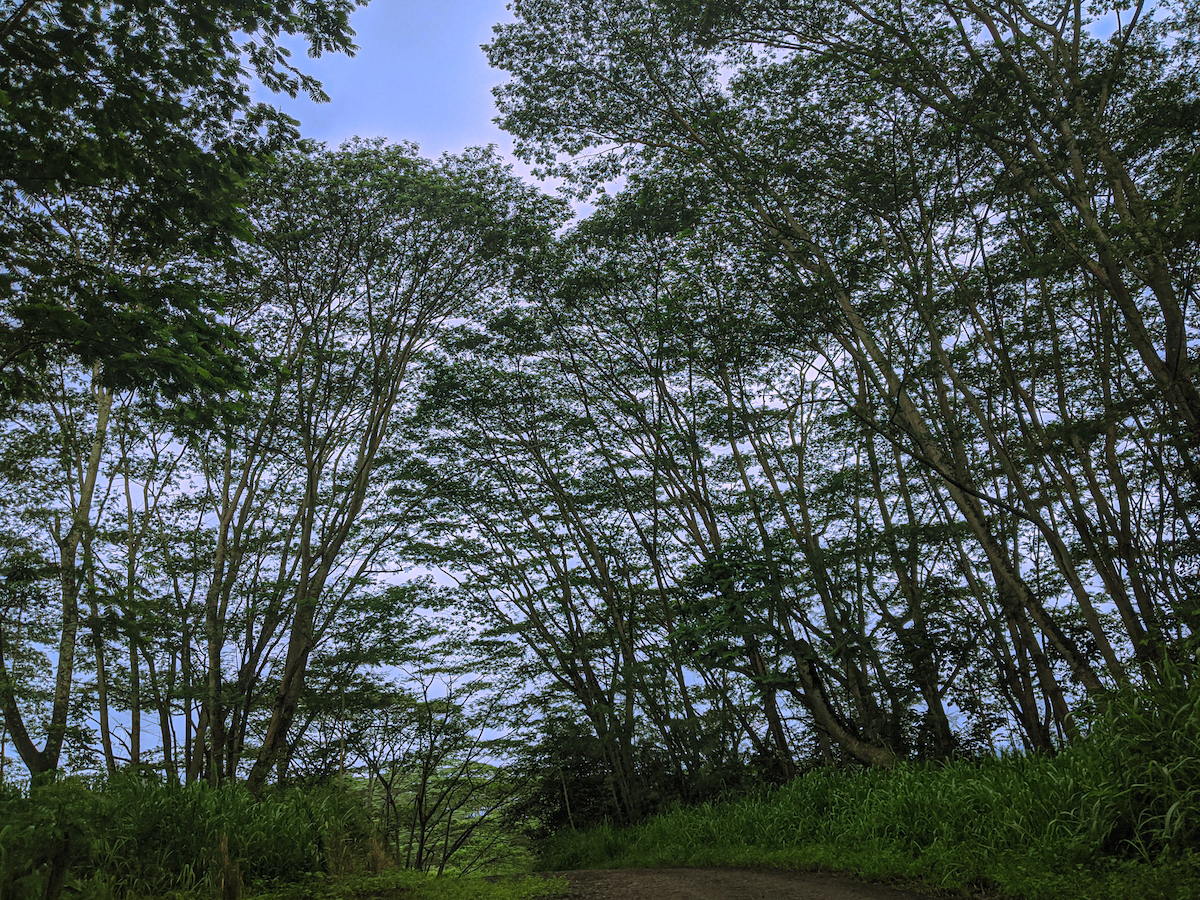
The Invasive Albizia Tree
Brought to the islands in 1917 by biologist Joseph Rock, the first specimen planted still lives in the Lyon Arboretum on O‘ahu. Albizia is commonly used for matchsticks, shipping pallets, wooden boxes, and chopsticks. The most massive tree in the legume family, they can grow up to 20 feet in one year!
Albizia is a perfect example of an invasive species in Hawaiʻi. It seeds well, it multiplies with ease, and it has no natural predators. Albizia has shallow roots with fragile limbs, which make it susceptible to falling in high winds, causing landslides. On the Big Island, Hawaiian Electric Company estimates that fallen albizia trees during Tropical Storm Iselle resulted in $13 million in damages. On Kaua'i, the abundance of albizia has resulted in landslides, damage to critical utility infrastructure, road closures, and hazardous driving conditions.
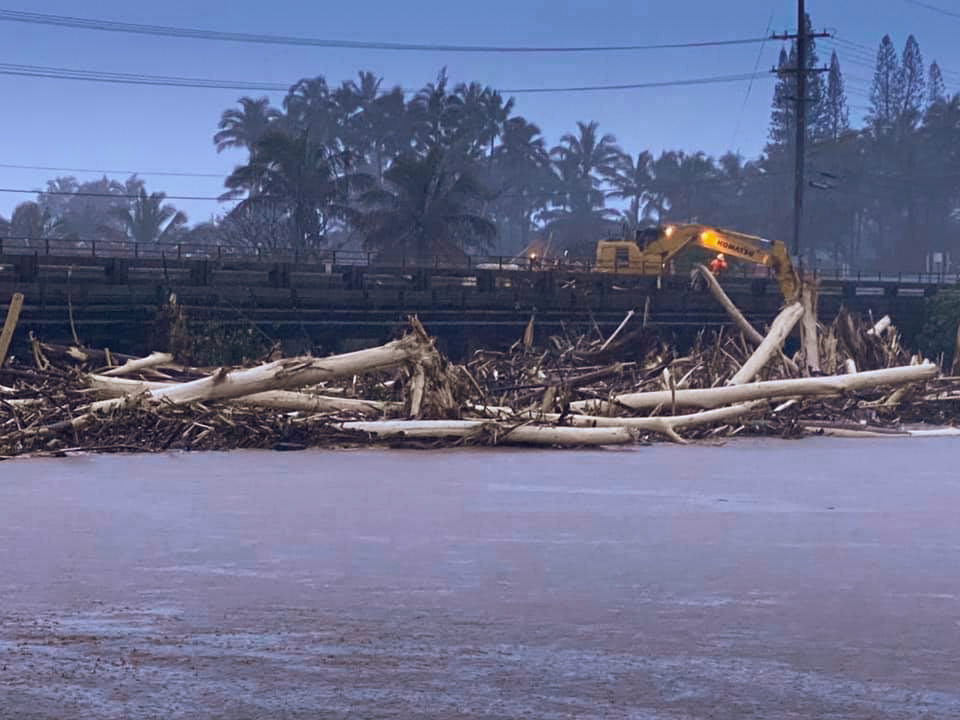
For example, the storm in late March 2020 caused the blockage of the Wailua River mouth when massive albizia logs lodged around the bridge and blocked water flow to the ocean. The water then backed up and caused damage to neaby roads, homes, and businesses. It also affected the structural integrity of the bridge!
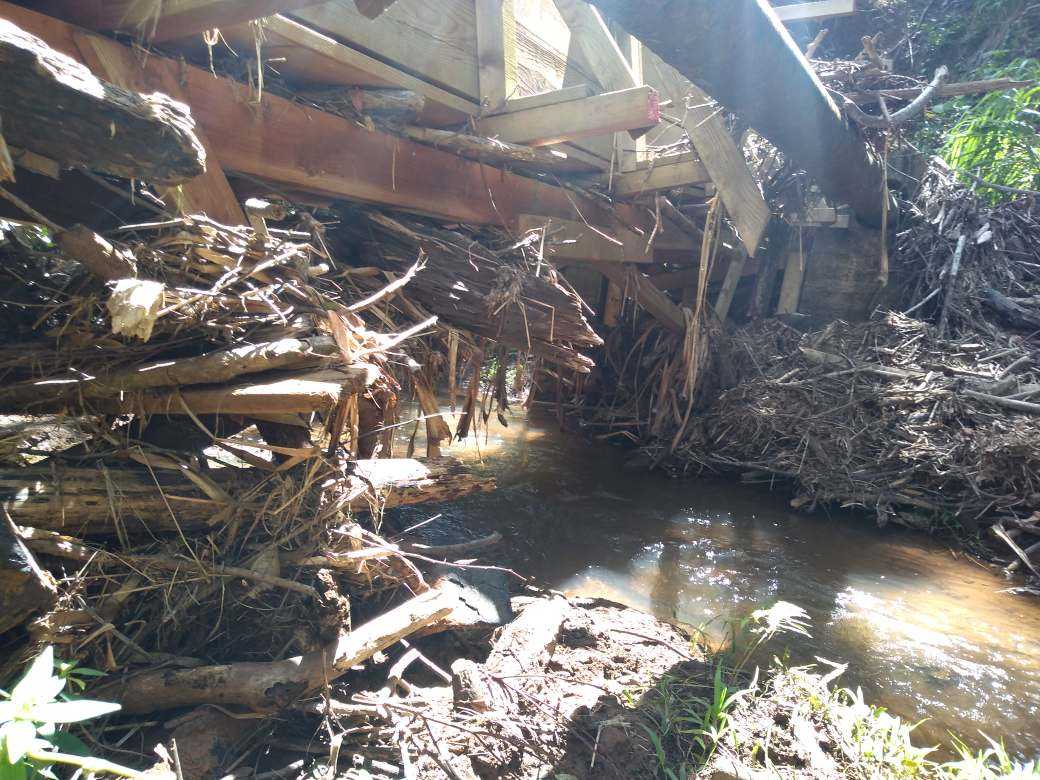
Grove Farm also suffered considerable damage from this storm as albizia trees fell on important water infrastructure and logs and branches blocked water flow. Landslides also resulted as the lush canopy of the albizia prevents vegetation growth beneath it, causing weakened slopes. Heavy rains washed away exposed soil leaving the weak albizia to uproot and result in dangerous landslides.
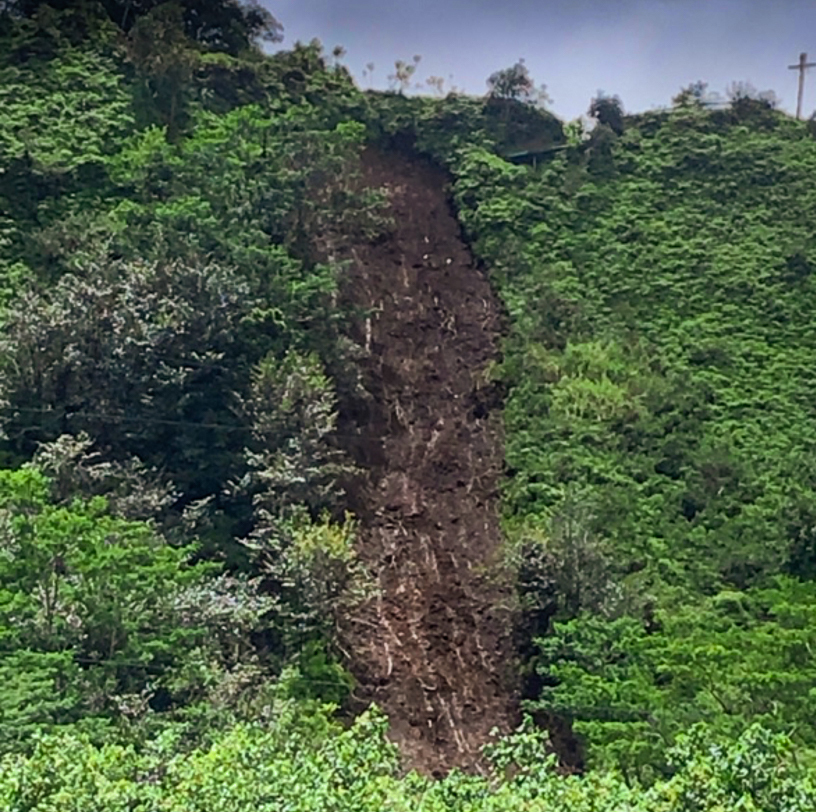
The destruction caused by albizia is tremendous. The fact that its seeds can spread easily and propagate quickly has wreaked havoc to our island. It is important that we take care of this issue to prevent further destruction. Here is where Green Energy steps in to help with the invasive albizia.
Green Energy to the Rescue
Green Energy runs the biomass plant here on Kauaʻi. They fell, chip, and burn the invasive albizia to create almost 12% of the island's electricity. The plant, located near Halfway Bridge, replaces up to 3.7 million gallons of fossil fuel a year from being imported to Kauaʻi. This is an annual savings of approximately $12 million – money that stays on island! Plus, Green Energy already created 43 long-term jobs ranging in many skillsets, including nursery managers, heavy equipment operators, plant technicians, mechanics, welders/fabricators, and engineers – and they continue to seek to fill more positions.
Green Energy has been providing firm power – meaning 24/7 -- to Kauaʻi Island Utility Cooperative (KIUC) since 2015. This plant is an integral part in moving towards KIUC’s goal of 100% renewable energy by 2045. In fact, since late 2019, there have been numerous days when the island operated at 100% renewable due to the combination of rooftop solar, utility-scale solar, hydroelectric, and biomass – an amazing achievement!
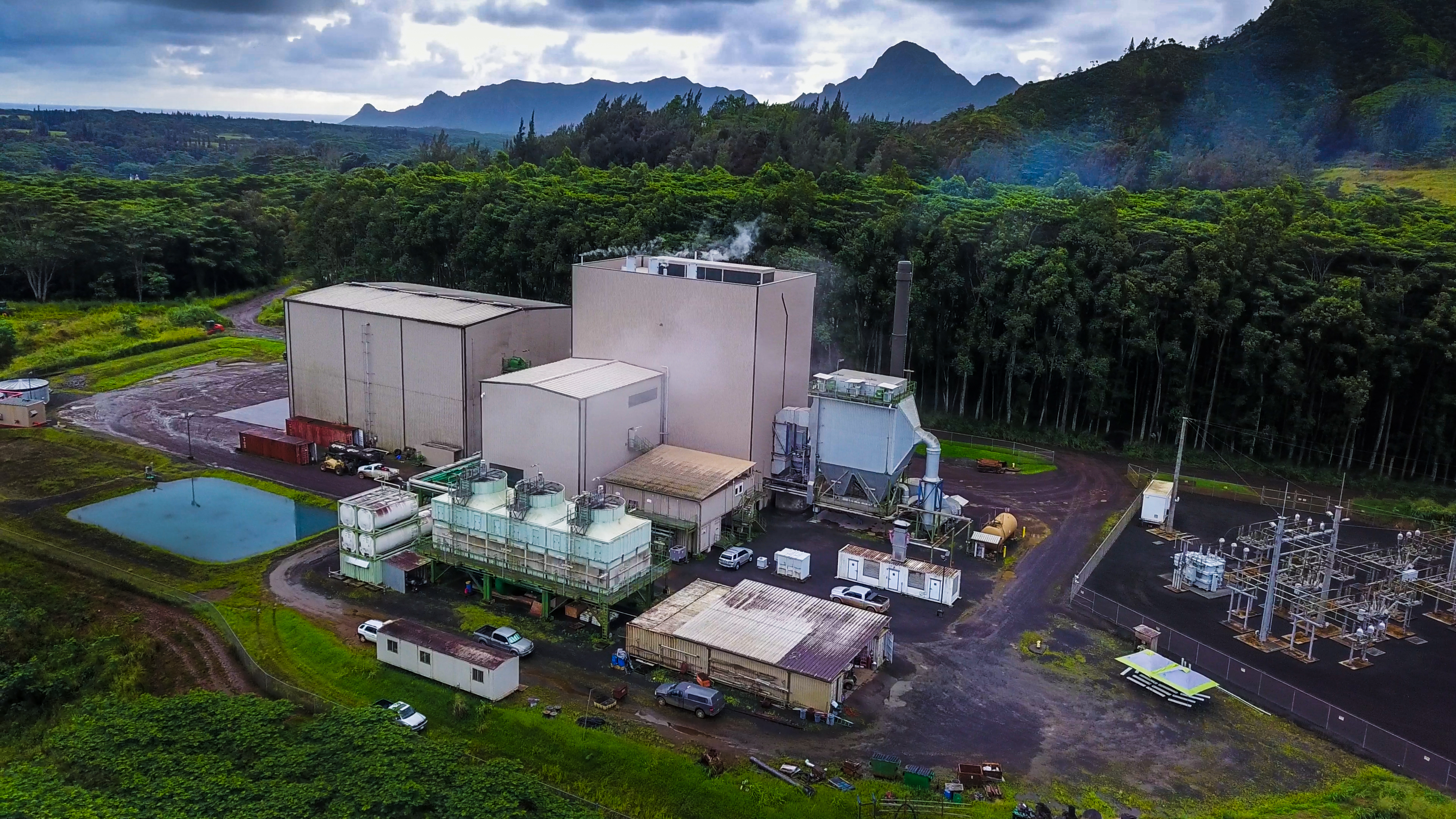
Green Energy is privately owned and is the only closed-loop plant in the nation. A closed-loop plant means every step in the process uses resources already here on the island. They harvest invasive trees such as albizia and replaces them with non-invasive eucalyptus trees propagated on Kauaʻi. The water used in the process is drawn from two wells in the area and the condensed steam is returned to holding beds that percolate to recharge the aquifers. “We are using Kauaʻi resources to make Kauaʻi energy,” Plant Manager Gilles Lebbe said, “Sustainability is the main goal to do business here.” In achieving this goal, Green Energy is committed to planting one million trees every year.
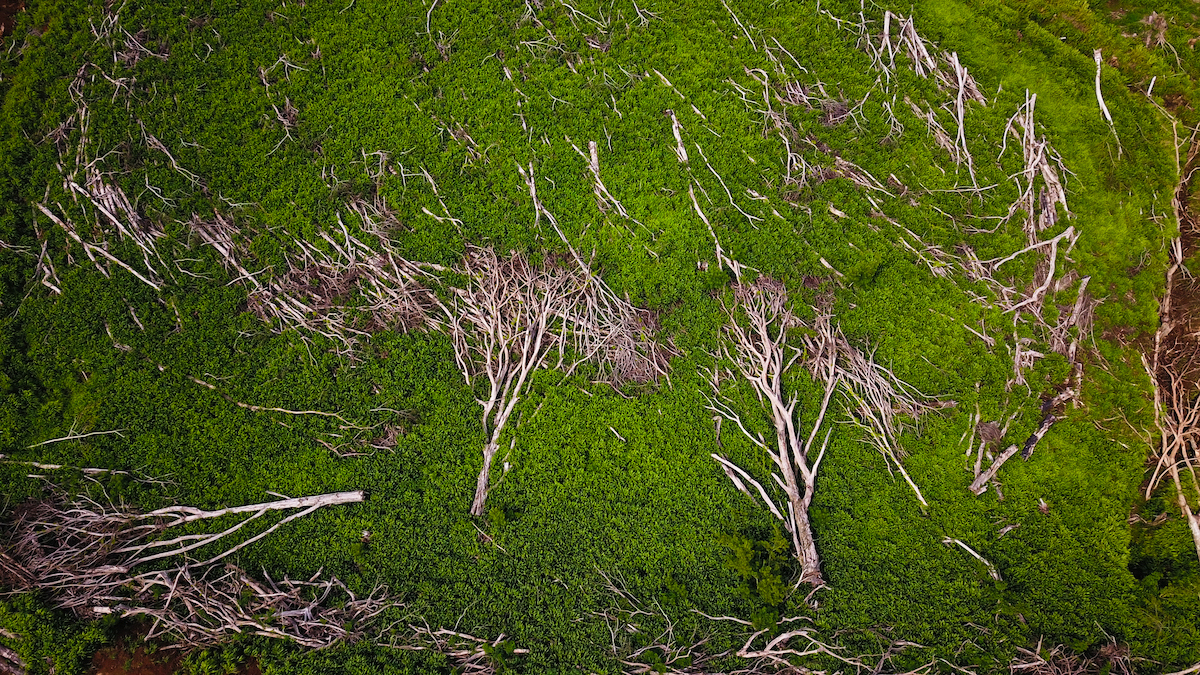
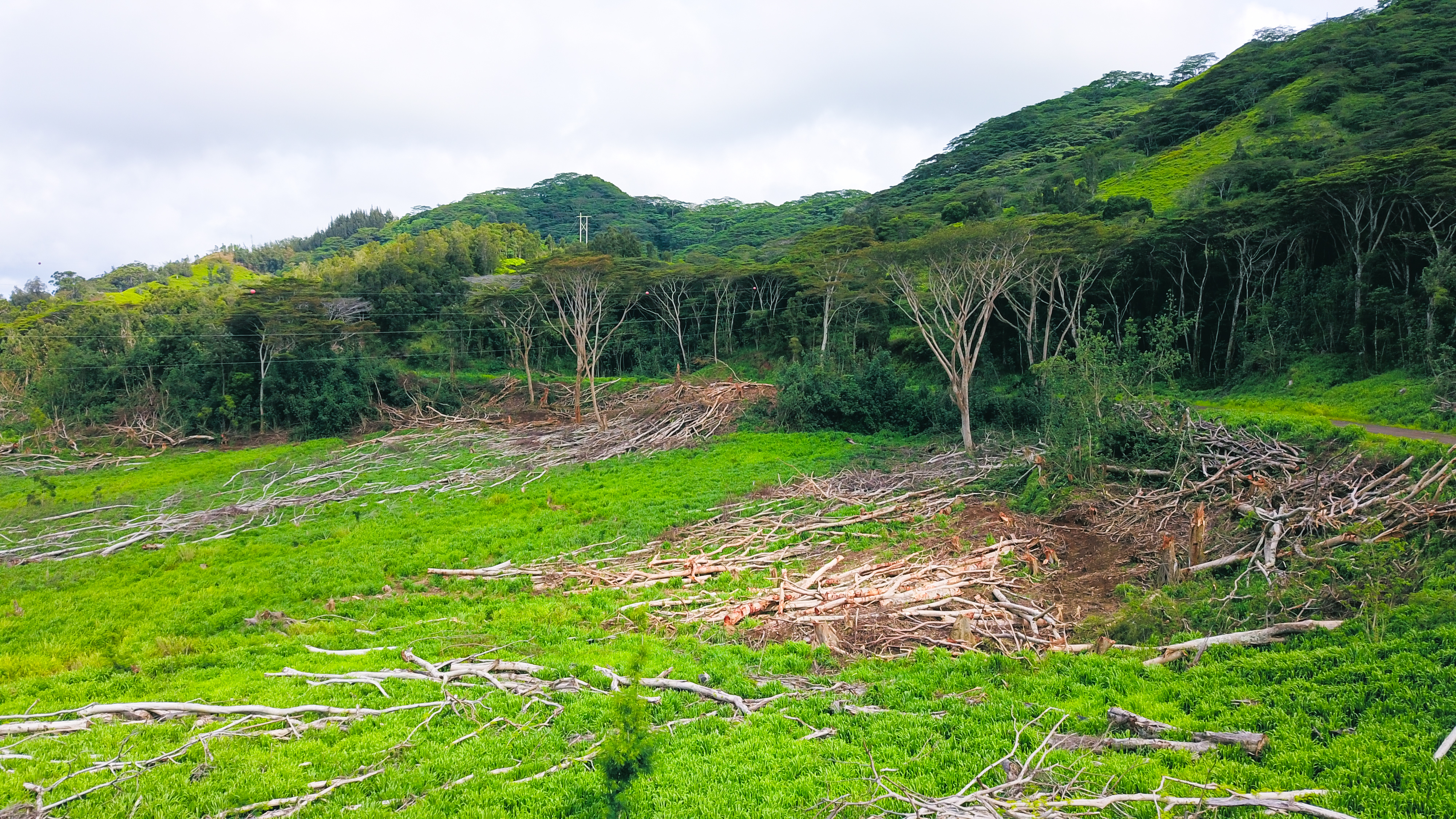
Turning a field of albizia into electricity takes about two months, depending on the weather. First, Green Energy cuts the trees down and lets them dry in the area for about six to eight weeks. The wood is then crushed, split, and chipped into a truck that delivers it to the facility. The wood chips are burned to heat water. The steam created turns a turbine that produces electricity. The ashes from the wood chips are captured and used to fertilize the newly planted eucalyptus trees in the field.
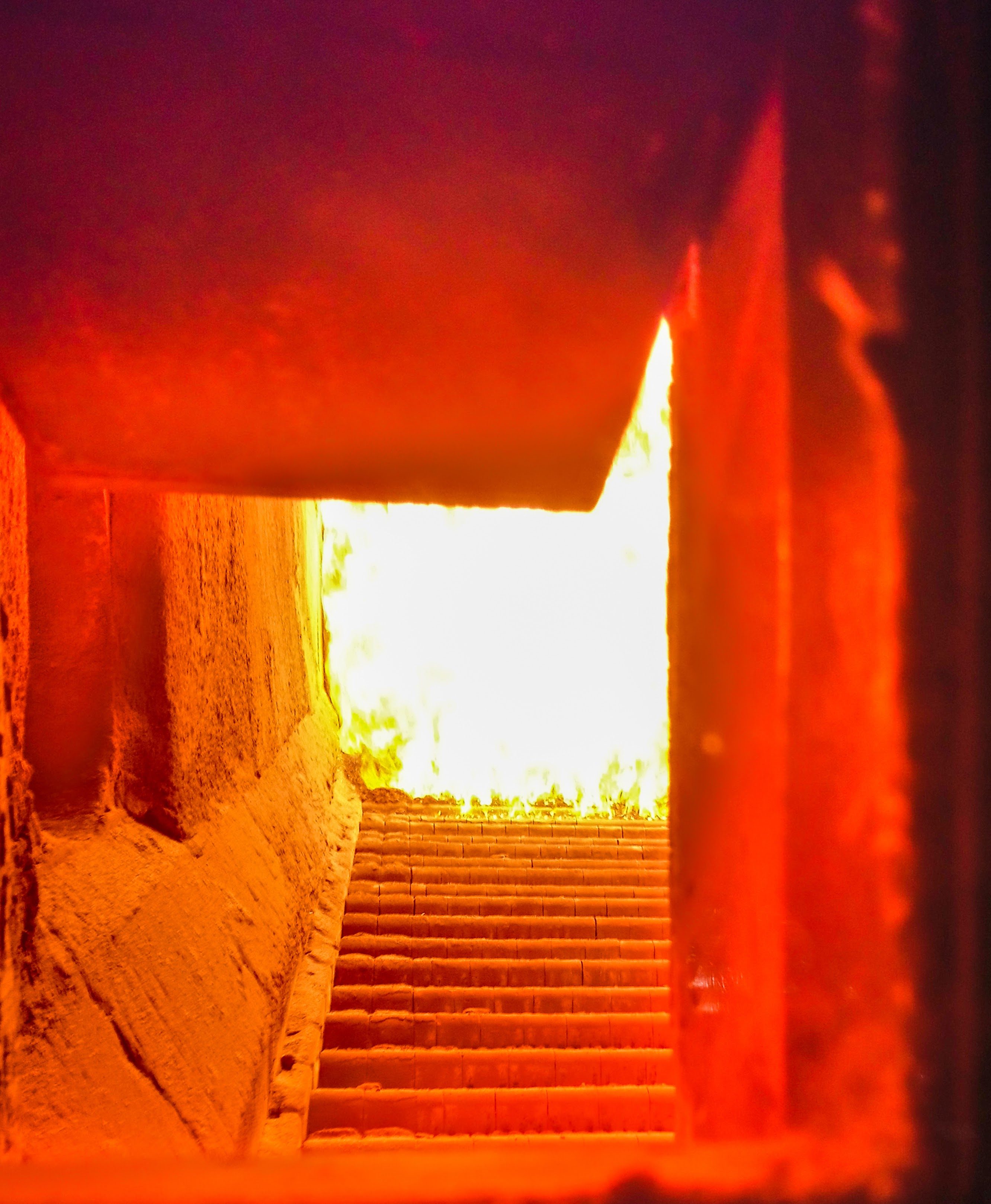
Why replace with eucalyptus? Eucalyptus is one of the most common trees on the planet. It has dense wood that grows quickly and is cheaper to harvest than albizia. Green Energy knew they had to replace the invasive albizia with a sustainable tree species that can adapt to Kauaʻi soil, is noninvasive, and has a high British Thermal Unit (BTU) rating. BTU is a measurement of heat required to raise one pound of water one degree. Albizia has an abysmal BTU rating, while eucalyptus has one of the highest – which means it burns hotter. Working with the Kauaʻi Invasive Species Council, Green Energy selected 150 cultivars of eucalyptus species. They narrowed it down to 30 species that you see growing on Kaua‘i today.
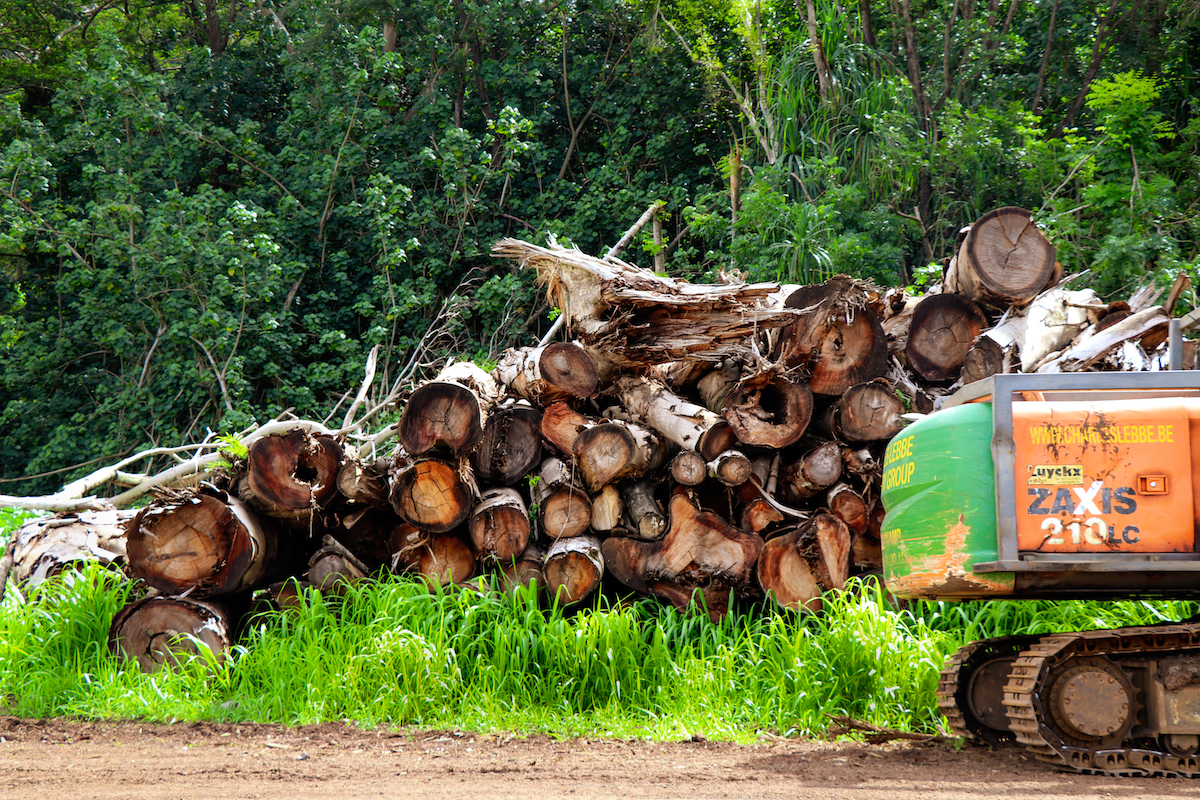
Green Energy has looked into experimenting with other widely common material on Kauaʻi like hau and guinea grass. “The science and the research aren’t proven to work yet,” said Lebbe. “One of the basic needs of every community is electricity. It's best to take the safe route that's guaranteed to work. You can’t take risks with energy.”
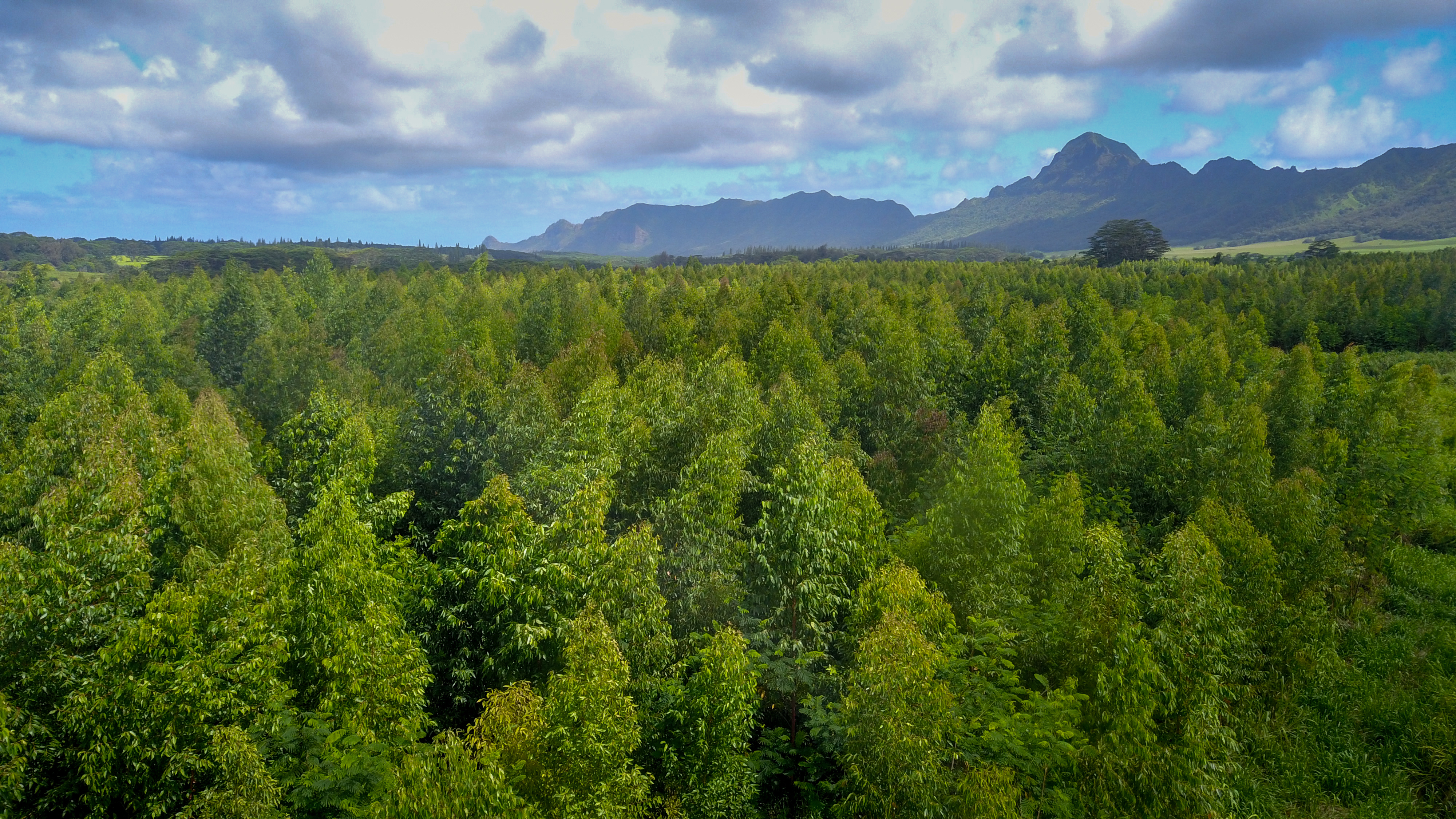
This model has been in existence since 2015 and proves that creating sustainable and renewable energy, reducing our carbon footprint, providing jobs in our community and eradicating invasive species works. Green Energy Kaua‘i -- www.greenenergykauai.com – is a proven model that should be replicated elsewhere in Hawaii and even worldwide.
